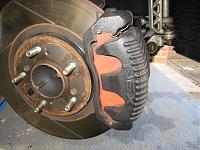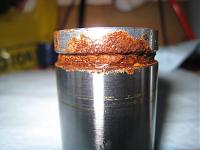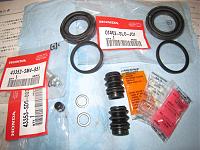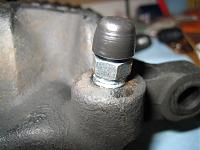
Originally Posted by
kzukNA1

1. Brake Calliper
Until several years ago, in Japan, we had to carry out the calliper overhaul (OH) every 2 Ė 3 years by law.
Since the rubber material has improved a lot, we are no longer forced to replace the boots, seals, cups and etc under the new law. However, it is still recommended by many reputable garages in Japan to have the calliper OH every 2 years in order to inspect the inside of the callipers and to prevent the rust from getting inside.
It seems that for UK NSX, the calliper OH is not carried out on a regular basis. In fact, I noticed that this is not just the case for our NSX but also for many other cars on the road.
I was lucky enough to drive many NSX based in UK and none of them were showing the same level of stopping power or the solid pedal feeling of the original spec.
One of the reason for this seems to be that the owner believes or being told that the OH is not required if the car was not driven regularly or if it is at low mileage.
Especially, among the owners with super low mileage NSX, the calliper has never been touched for nearly/over 10years.
This is very worrying as the piston(s) inside the calliper just sits at the same position for many months/years if the brake pedal or side brake were left without any movements. Unless your NSX is kept inside the 24Hr air-conditioned garage, the moisture in the air will eventually get into the calliper causing the rust slowly. It will damage your piston, cause seizing and in the worst case scenario, it will cause brake fluid leakage or entire calliper to be replaced.
Therefore, regardless of your annual mileage, it is essential to have your callipers serviced at regular interval. Needless to say, the brake fluid should be replaced every year for standard NSX regardless of the annual mileage and for those who take out their NSX on track, well, I donít need to say anything as they are more experienced than me. For those who are interested, they are replacing after every track event or after a few events depending on the brake fluid used.












 Reply With Quote
Reply With Quote
